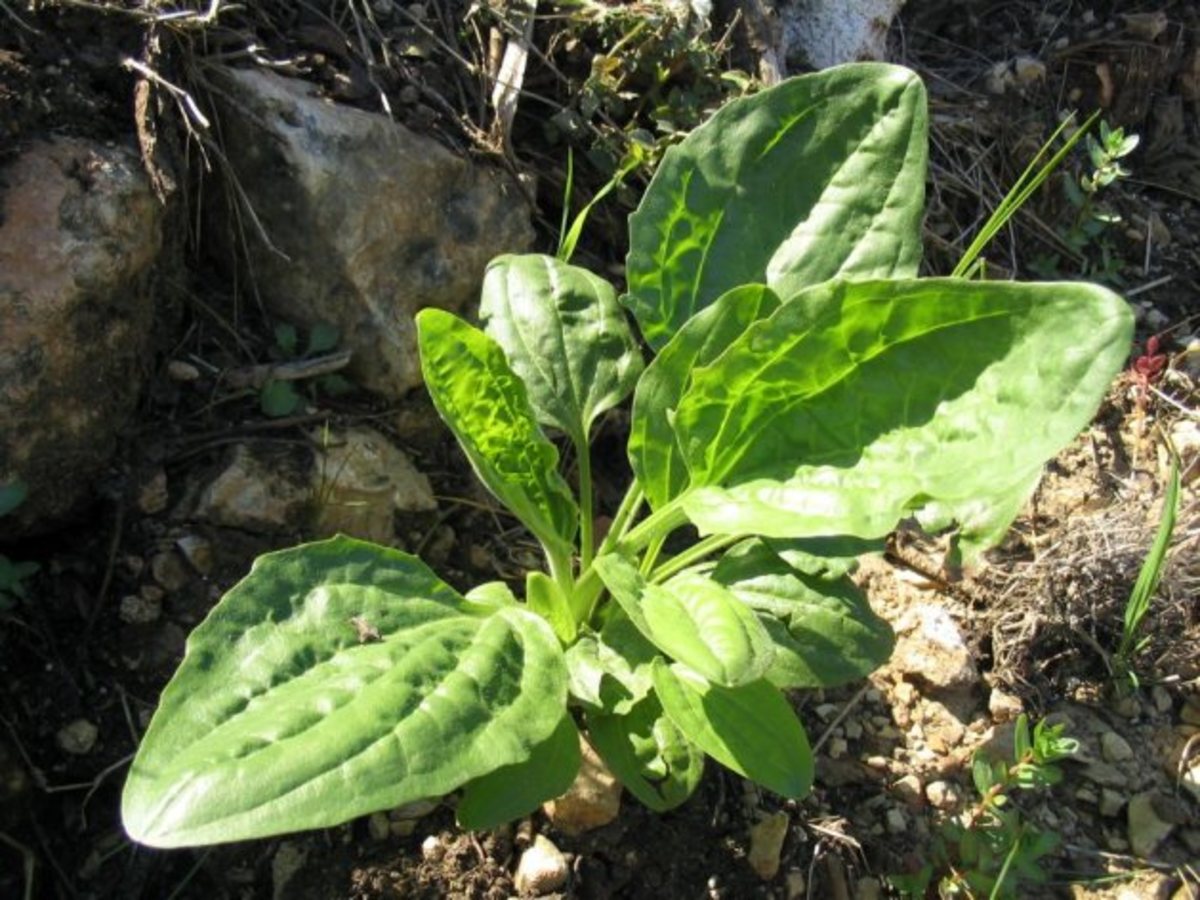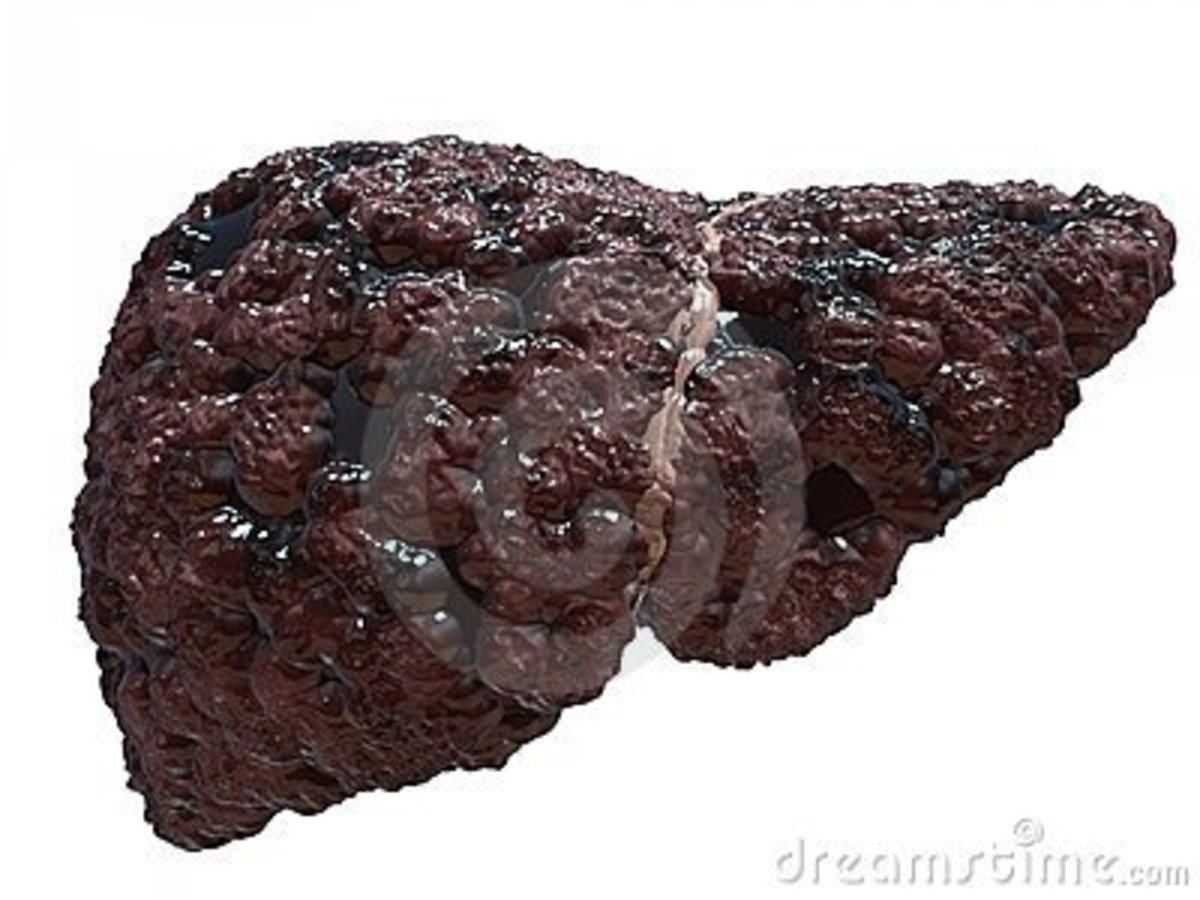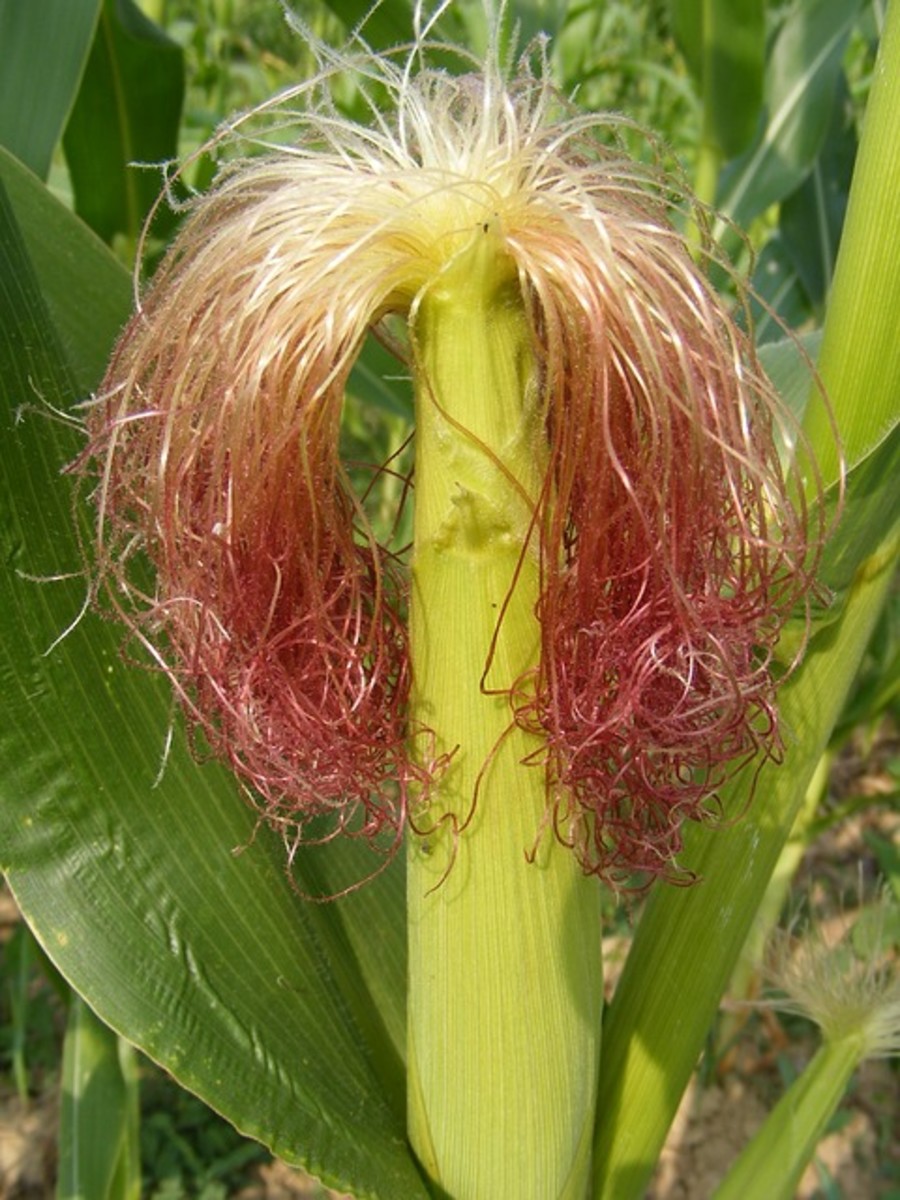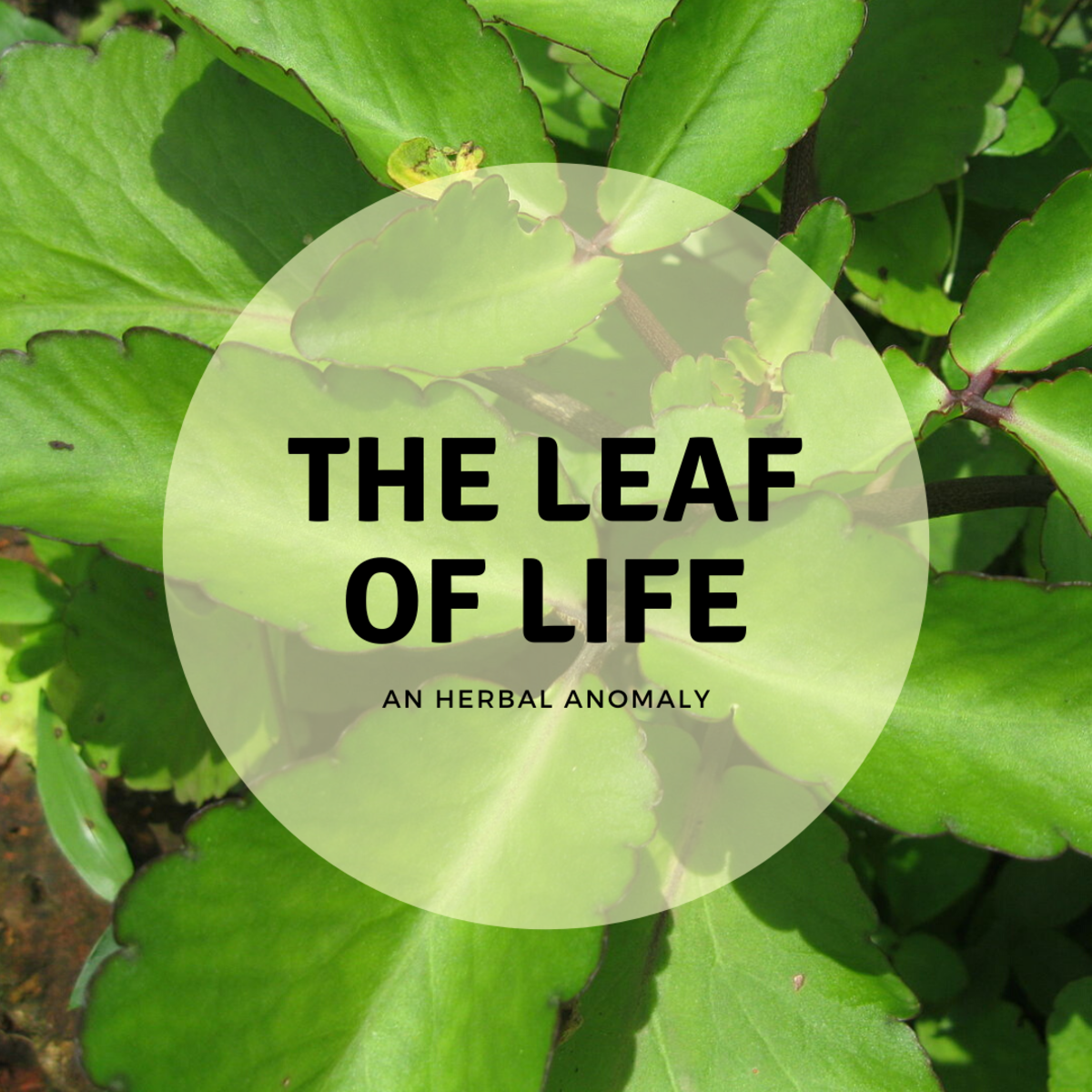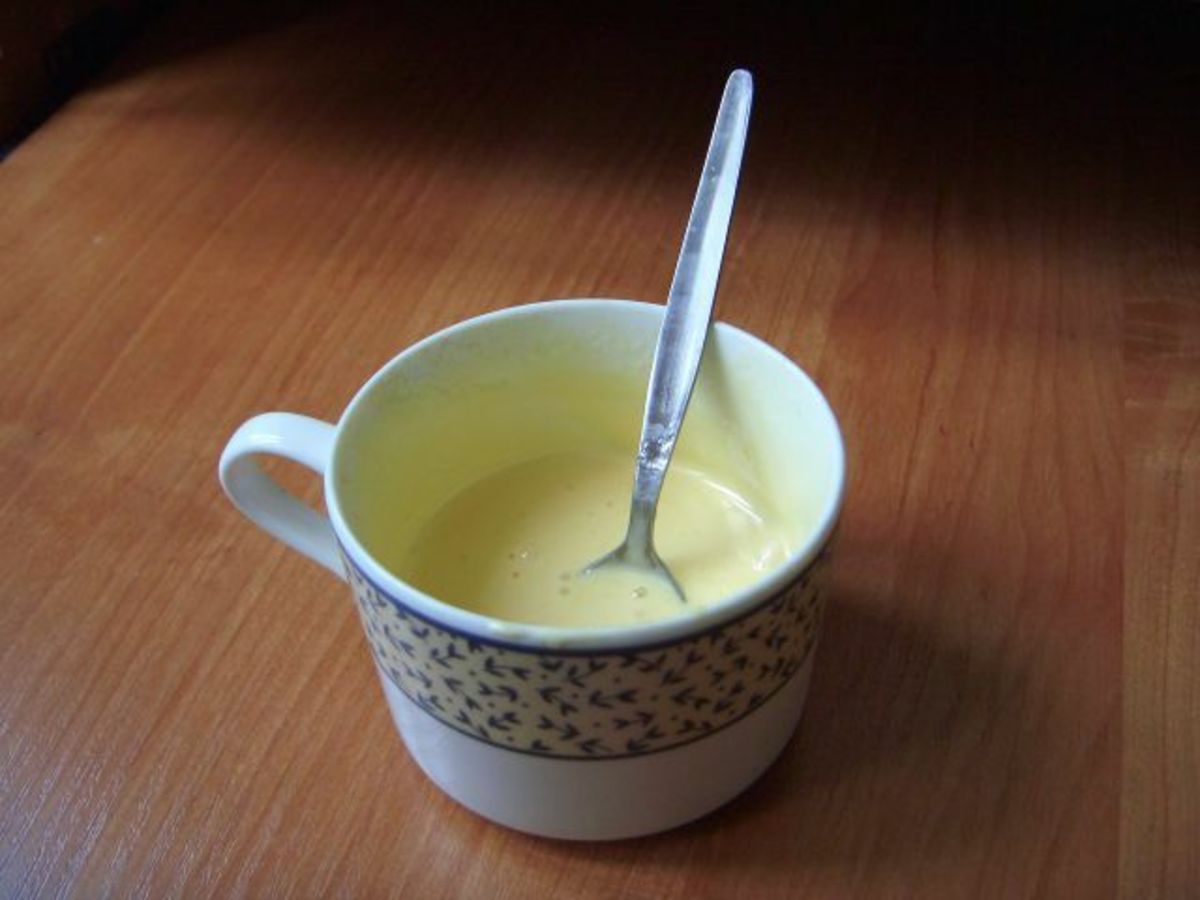How to Make a Tincture
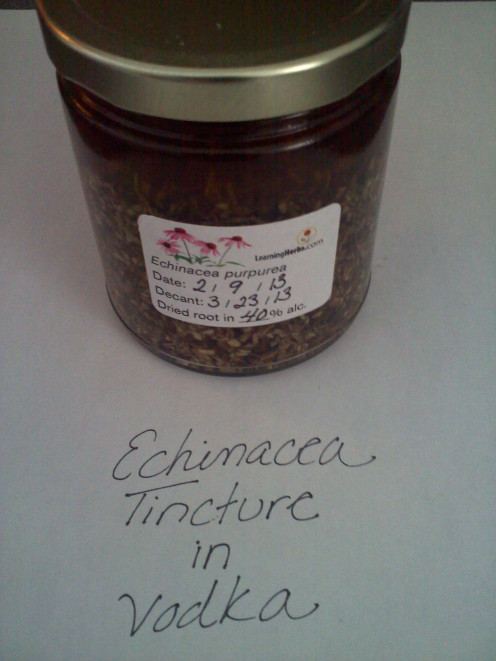
As an herbalist and naturopath, there is much to learn. I hope to pass on information as I gain it myself. The information I provide is not intended to be in place of seeking needed professional medical help. However, with the use of natural methods, one can prevent or "cure" conditions that lead to more serious conditions. Most of my information comes from personal experience with getting fibromyalgia under control using natural remedies and herbal supplements; helping others with myriad health issues; classes taken in Colorado and New York and online; my growing collection of books on the subject, and; general research.
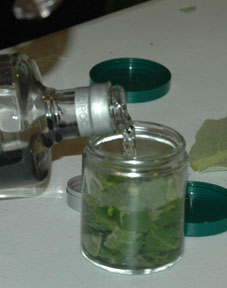
Definition of Tincture
A tincture is a concentrated liquid extract of herbs.
It is usually taken by the dropperful and is usually diluted in warm water. A tincture can also be diluted in juice for a more pleasant taste for children. As with any natural remedy, you want to be careful when administering.
How Much Alcohol?
You can easily figure out the amount of alcohol in a spirit. The alcohol content is equal to half the proof number. So, if the spirit is 80 proof, there is 40% alcohol.
To make a tincture, you want alcohol that is 80-100 proof.
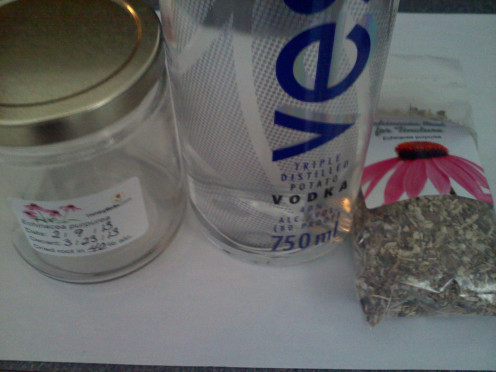
What Goes Into a Tincture?
There are only two main things needed for a tincture:
- Solvent/Extractant: this is usually alcohol, vegetable glycerin, or apple cider vinegar.
- Herb: the type of herb and part used will be based on the purpose of the tincture.
The most potent extractant is alcohol.The most typical types of alcohol used are vodka, gin, and brandy. If you want to use alcohol for its potency but still want to reduce the amount of alcohol in the end, there are methods that include boiling that can help remove some alcohol content after the curing process.
However, there are many people who cannot tolerate alcohol (like myself) or opt not to use it. Note that vegetable glycerin is good for kids because it does have a sweet taste and is natural. Apple cider vinegar will have a more bitter, acidic taste, and like vegetable glycerin is not as potent a solvent as alcohol. However, all are excellent preservatives.
How to Make a Tincture
There are several ways to make a tincture. This version is based on Rosemary Gladstar's simple version in her book Herbal Recipes for Vibrant Health. People often refer to this method as the folk method. The annotations are a combination of notes from the aforementioned book and notes I took while training in Colorado, New York and online.
What You Need:
- Glass jar with a plastic lid
- Solvent/Extractant of choice (see above)
- Herb of choice
- Time (it takes a minimum of 20 days to cure. Most go with 6 weeks)

Steps for Making a Tincture:
- Finely chop your herbs. The finer the better. (See note below).
- Place the herbs in a clean, dry glass jar. Pack them tightly to fill between 1/2 to 3/4 of the jar.
- Fill jar with enough extractant to cover the herbs and reach between 2-3 inches above the herbs. (See note below).
- Cover the mixture tightly with a plastic lid. Using a plastic lid will prevent corrosive reactions.
- Put the jar in a warm spot for 4-6 weeks. The longer the better. I was taught a minimum of 20 days for alcohol based tinctures and a minimum of 25 days for other bases. (See note below).
- Shake the jar daily.
How To Bottle Your Tincture
Steps for Bottling:
- Strain the herbs from the liquid in a large stainless steel strainer lined with cheesecloth or muslin.
- Put the liquid (your tincture) in a dark, glass bottle.
- Label your bottle with the name of the tincture. Some people like to include the type of extractant and parts of the herb used. Keep out of reach of children.
- Store in a cool, dark place.
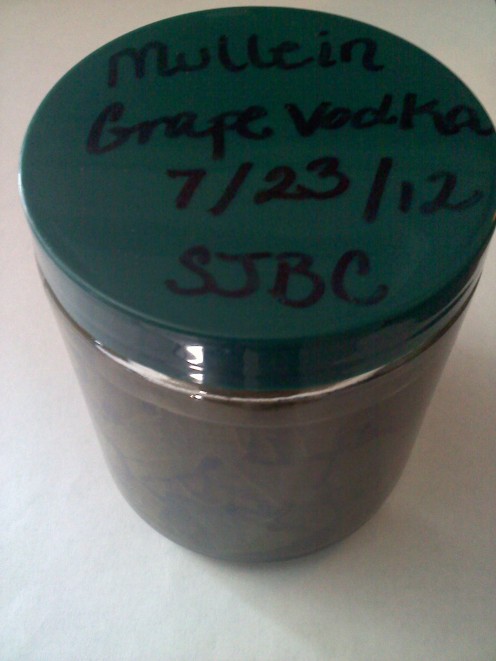
Notes
- Fresh herbs are better than dry herbs in most instances. Some herbs are hard to obtain in a fresh state, so using dried is expected or maybe the only option. Susun Weed writes in her book Therapeutic Herb Manual that some herbs must be used in their dried form or else they are poisonous and some are best extracted as dried herbs.
- Rosemary Gladstone recommends that if you are using glycerin as your solvent to dilute it with water. The ratio would be 1:1. So if you are using a total of 1/2 cup of liquid, 1/4 cup would be glycerin and 1/4 cup would be water. When we made the catnip glycerin tincture, we did not dilute the glycerin with water. And we simply blended the herbs right in with the glycerin in a vitamix.
- If vinegar is being used, Rosemary Gladstone states that it should be warmed before adding to the herbs.
- You will find a hug range for curing your tincture. I have seen as few as 4-5 days. But the average is around a minimum of three weeks. But the longer you let it sit before straining the better, in order to get all the oils and healing properties. Susun Weed suggests bottling four of the same tincture at once, so as soon as one is done, the next one will be cured longer and be better, and so on until you are a year ahead with tinctures.

About the Author
Stephanie Bradberry is an educator, herbalist, naturopath and energy healer. She is the founder/owner of Naturally Fit & Well, LLC and creator of the Bradberry® brand of products. Stephanie is committed to meeting your unique health, wellness and beauty needs naturally. She loves being a freelance writer and editor on the side.




